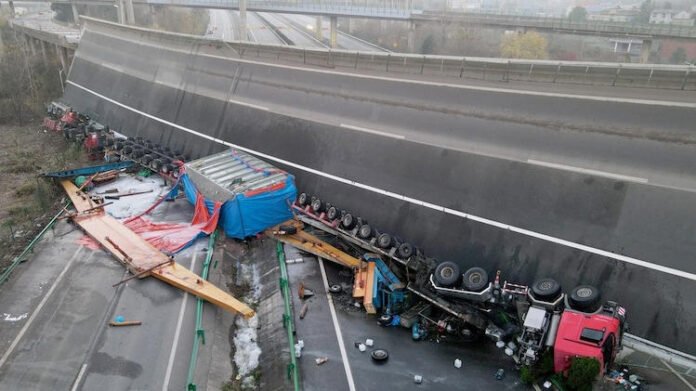Tragedy struck the province of Guangdong, China, as a highway collapse claimed the lives of at least 19 people. The incident occurred on a section of the G4 Beijing-Hong Kong-Macau Expressway in Dongguan, sending shockwaves through the region.
It was the early hours of the morning when the collapse unfolded, catching many commuters by surprise. Heavy rainfall, a common occurrence in the region during this time of year, is suspected to have triggered a landslide that led to the structural failure of the highway. As the road crumbled, several vehicles were buried under the debris, trapping passengers and resulting in fatalities.
Rescue efforts commenced immediately, with firefighters, police, and medical personnel mobilizing to the scene. However, the rescue operation was fraught with challenges. The unstable conditions caused by the collapse made it difficult for rescue workers to access the affected area safely. Despite their best efforts, the death toll continued to climb as more bodies were recovered from the rubble.
The Chinese government responded swiftly to the tragedy, dispatching officials to oversee rescue operations and investigate the cause of the collapse. President Xi Jinping called for a thorough investigation into the incident, emphasizing the importance of prioritizing public safety in infrastructure projects. The government also pledged to provide assistance to the families of the victims and take measures to prevent similar tragedies in the future.
The collapse of the highway has raised concerns about the safety of China’s infrastructure, particularly in regions prone to natural disasters such as landslides and heavy rainfall. Critics have pointed to inadequate maintenance and oversight as contributing factors to the incident, highlighting the need for stricter safety regulations and inspections.
China has experienced rapid economic development in recent decades, leading to extensive infrastructure construction projects across the country. While these projects have contributed to economic growth and connectivity, questions have been raised about the quality and safety of infrastructure. Instances of collapses, accidents, and sinkholes have prompted calls for greater transparency and accountability in infrastructure development.
Infrastructure safety is paramount for the well-being and prosperity of a nation. Safe and reliable transportation networks facilitate economic activity, connect communities, and improve quality of life. Ensuring the safety of infrastructure requires proper planning, design, construction, and maintenance, as well as adherence to strict safety standards and regulations.
The tragedy in Guangdong serves as a sobering reminder of the human cost of infrastructure failures. As rescue efforts continue and investigations unfold, it is imperative that lessons are learned and actions are taken to prevent similar tragedies in the future. Governments, developers, and construction firms must collaborate to implement robust safety measures and invest in resilient infrastructure that can withstand natural disasters and other unforeseen events.
The safety and well-being of citizens must always be the top priority in infrastructure development, and concerted efforts are needed to ensure that infrastructure projects meet the highest standards of safety and quality. Only then can tragedies like the collapse of the highway in Guangdong be prevented, and the lives lost be honored by a commitment to building a safer future.
Moreover, the incident underscores the need for continuous monitoring and maintenance of existing infrastructure to detect and address potential risks before they escalate into tragedies. As China continues its rapid development and urbanization, it is crucial to prioritize infrastructure safety at every stage of planning and execution. This includes robust risk assessment procedures, regular inspections, and timely maintenance to ensure the integrity and reliability of critical transportation networks. By investing in proactive safety measures and learning from past mistakes, China can mitigate the risk of future disasters and safeguard the lives of its citizens.

